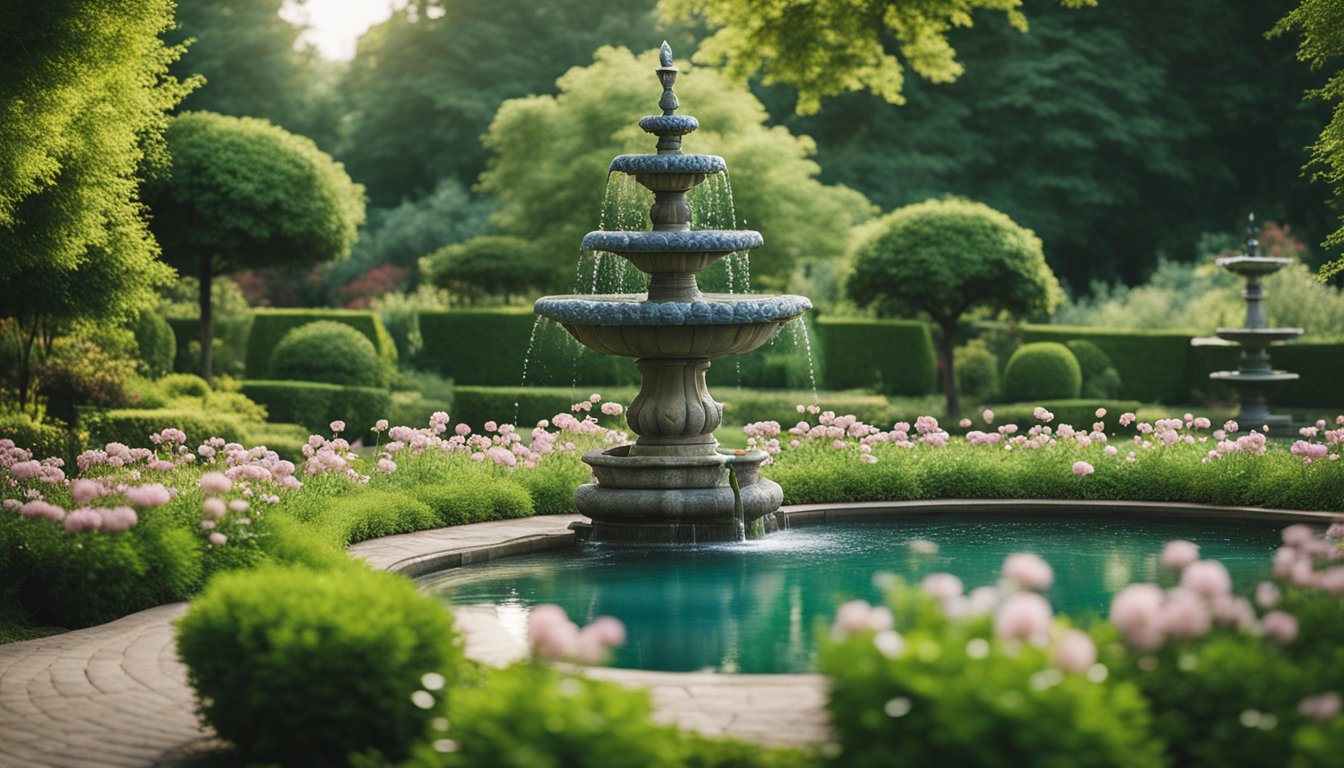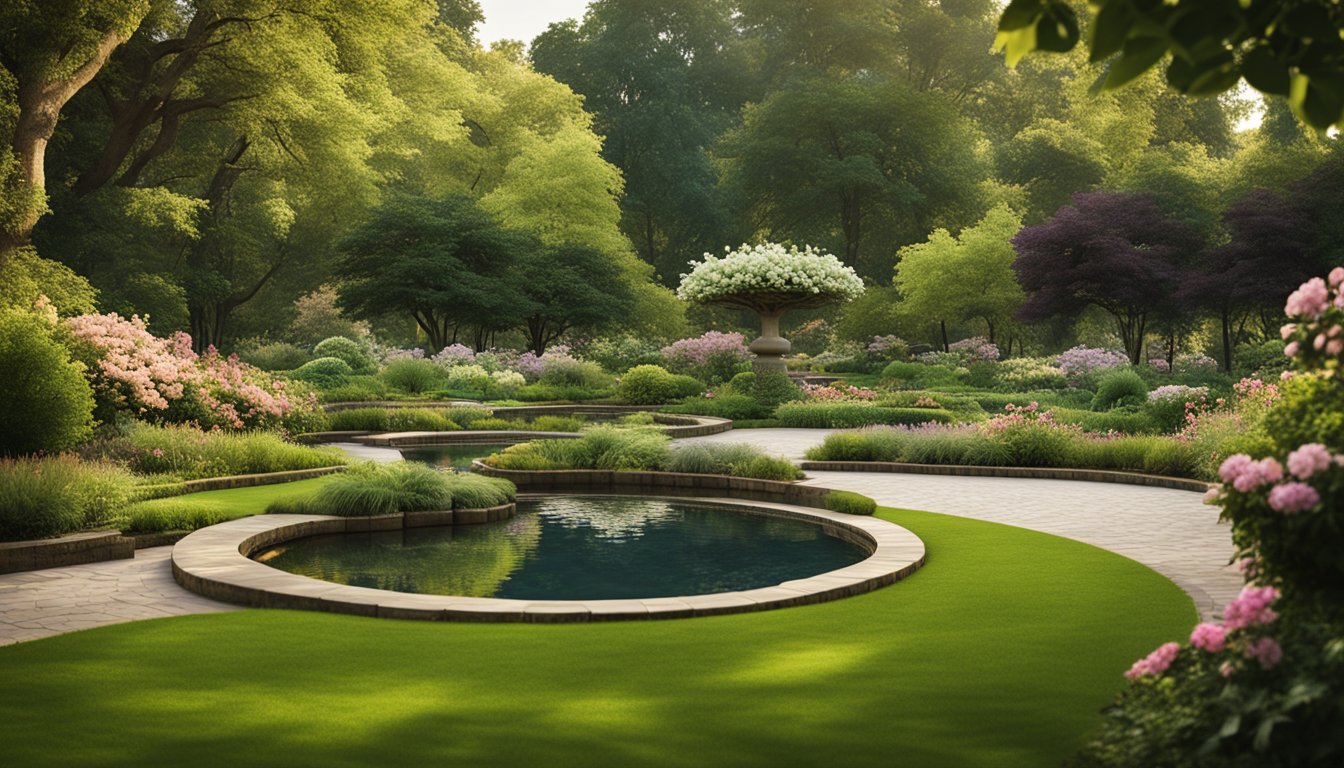Late updated: 30 Apr 2025 13:04
Written by: James Whitaker
Creating Tranquil Garden Spaces for Relaxation: Tips for a Peaceful Retreat
Creating a tranquil garden space for relaxation offers a personal sanctuary where we can unwind. The key to achieving this oasis lies in the thoughtful incorporation of soothing elements like gentle curves, harmonious plant pairings, and peaceful colour palettes. These design principles help craft an environment that fosters relaxation and calm.

In our quest to establish a peaceful retreat, welcoming multiple sensory experiences can be incredibly transformative. The rustling of ornamental grasses, the gentle splash of a water feature, and the calming hues of flowering plants can significantly enhance the ambience of our gardens. By focusing on these elements, we pave the way for a truly invigorating outdoor space.
Let's not forget the importance of strategic planting and layout in shaping our garden's tranquillity. The positioning of rocks in a Zen setup or the complementary planting of flowers and grasses can provide balance and a sense of grounding. These touches contribute to a cohesive design, making our gardens a haven for relaxation.
Key Takeaways
- Curves and colours create harmony and relaxation.
- Sensory elements enhance the tranquil atmosphere.
- Strategic plant placement grounds the space.
Principles of Tranquil Garden Design
Designing a tranquil garden involves embracing simplicity and natural elements that evoke a sense of stillness and serenity, while incorporating asymmetry and mystery for an engaging landscape. These principles create a harmonious garden space that promotes well-being.
Embracing Simplicity and Naturalness
In our pursuit of a relaxing garden, we prioritise the principles of simplicity (kanso) and naturalness (shinzen). A garden that embodies simplicity avoids unnecessary complexity, allowing us to focus on minimal yet impactful elements.
This might involve the use of restrained colour palettes and the strategic placement of plants to create a calming visual appeal. Naturalness is achieved by using native plants and materials that blend seamlessly with the garden's surroundings, reinforcing a connection to nature.
When selecting materials, choosing natural stones, wood, and other organic components can enhance the garden's authenticity. By allowing these natural elements to guide our design, we craft a tranquil oasis that feels both intentional and effortlessly harmonious.
Creating a Sense of Stillness and Serenity
The stillness (seijaku) and serenity we seek in garden design are integral to fashioning an outdoor space that acts as a refuge from daily stress. We must practice balance, where water features like ponds provide gentle, ambient sounds that soothe and encourage reflection.
This approach calls for careful consideration of space, ensuring areas for solitude and interaction are well-defined. A carefully placed bench or seating area might encourage moments of contemplation, emphasising tranquillity within the garden's framework.
Plants that sway gently with the breeze or reflect light creates a dynamic yet calm atmosphere. This balance of movement and stillness is crucial in achieving a harmonious garden space that promotes relaxation and peace of mind, offering a break from our lives' hectic pace.
Incorporating Asymmetry and Mystery
Embracing asymmetry (fukinsei) introduces a subtle unpredictability that draws us into the garden's narrative, adding depth and intrigue. Asymmetry is a hallmark of Zen garden design, where irregular patterns and layouts mirror the randomness of nature.
We often employ an irregular arrangement of rocks or winding paths that encourage exploration and curiosity. This unpredictability invites us to wander and discover hidden nooks and peaceful alcoves.
The element of mystery is enhanced through varied plant heights and textures, creating layers that reveal themselves gradually. This interplay of concealment and revelation fosters a sense of awe and discovery, allowing us to reconnect with a childlike sense of wonder in our tranquil garden spaces.
Essential Elements for Creating Tranquil Garden Spaces

When crafting a tranquil garden retreat, selecting calming flora, integrating water features, designing inviting seating, and choosing the right materials for pathways and lighting are vital. These key elements work together to create an oasis for relaxation and sensory enjoyment.
Selecting Calming Plants and Trees
To create a soothing garden sanctuary, we should choose plants and trees that evoke calmness. Lavender, known for its relaxing fragrance, is a superb choice. Ferns and mosses bring a soft, natural touch, while Japanese forest grass adds a gentle texture. Including trees like maples or cherry blossoms supports tranquillity. Privacy can be enhanced with tall shrubs or bamboo screens. These plants create a peaceful, sensory experience that appeals to all senses, leading to ultimate relaxation and peace.
Water Features and Their Soothing Effects
Water elements add a layer of calmness to our garden environments. A simple pond or water feature, with rocks and gentle flow, can transform a space into a serene retreat. The sound of flowing water has been shown to reduce stress and improve mental health. For smaller spaces, a fountain or bird bath might suffice. The continual movement of water captivates the senses, inviting us to unwind amidst nature's gentle lull.
Designing Comfortable and Inviting Seating Areas
Quality seating is essential for making our garden spaces truly inviting. Options range from a rustic wooden bench to cosy hammocks or a swing. Adirondack chairs paired with a bistro set offer comfort and style. Design a reading nook using an arrangement of cushions. Incorporate an outdoor fire pit for added warmth during cooler evenings. These elements create a space where we are encouraged to linger, settle in, and enjoy nature.
Pathways, Materials, and Lighting for Ambience
The design of pathways can significantly influence the garden's ambience. Stepping stones or paths made from gravel and rocks provide a natural, rustic feel. Varying materials and bamboo screening can create hidden garden pockets for privacy. Outdoor lighting, such as soft fairy lights or solar lanterns, adds a magical dimension to the garden. Carefully chosen lighting transforms the garden into a peaceful haven, elevating the space to one of true serenity.
Frequently Asked Questions

Establishing a tranquil garden space involves selecting the right elements and design principles. Incorporating aspects of a Japanese Zen garden can enhance serenity, while plants play a crucial role in fostering a peaceful atmosphere.
What elements are essential for establishing a serene garden space?
Key elements include calming water features like fountains or ponds, soothing lighting, and comfortable seating areas. Natural materials, such as wood and stone, blend with greenery to create harmony.
Could you suggest design principles for a Zen garden to promote relaxation?
Minimalism is central, with a focus on simplicity and natural forms. Asymmetry, balance, and an emphasis on earth tones promote tranquillity. Gravel or sand raked into ripples symbolise water, reinforcing a sense of calm.
What are some simple yet effective Zen garden designs for beginners?
Start with a small area using gravel, stones, and a few plants. Incorporate a focal point like a small statue or a tree. Limit colours and shapes to maintain simplicity. This approach results in an accessible and tranquil space.
How can one incorporate the tranquillity of a Japanese Zen garden in a small outdoor area?
Maximise space with vertical gardens or container plants. Simplify the landscape using gravel and groundcovers. Use elements like a small water feature or lantern to create focal points, enhancing the calming atmosphere in limited areas.
In what ways can plants contribute to the peaceful atmosphere of a garden designed for relaxation?
Plants with soothing fragrances, like lavender or jasmine, enhance relaxation. Vary heights and textures to maintain visual interest without overwhelming the senses. Evergreens provide year-round structure, while flower choices can add seasonal colour and scent.
What features are recommendable for a school garden to ensure a peaceful environment for students?
Incorporate sensory elements like wind chimes and scented plants. Create quiet areas with seating for reflection or group learning. Ensure pathways are easy to navigate to promote accessibility and safety. These features foster a calm and welcoming environment.
